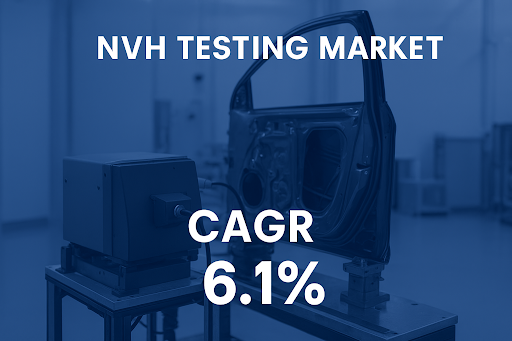
How Cloud Integration Software Is Transforming Enterprise Connectivity
- Business
- October 17, 2025
- No Comment
In today’s hyperconnected world, data has become the backbone of every business process. Yet, as enterprises adopt more cloud-based applications, managing information across multiple environments has grown increasingly complex. Cloud Integration Software has emerged as the bridge that seamlessly connects disparate systems, helping organizations maintain agility, security, and insight in a fast-moving digital landscape. The transformation powered by these platforms is redefining how businesses manage their data, collaborate, and scale operations in the era of digital transformation.
Contents
The Rise of Cloud Integration Software
Over the last decade, the enterprise IT landscape has undergone a dramatic shift. Businesses have rapidly transitioned from on-premises infrastructure to hybrid and multi-cloud environments. Each department, from HR to marketing and finance, often uses its own preferred software tools, creating data silos that hinder efficiency and insight.
Cloud integration software eliminates these silos by enabling smooth data flow between systems, whether they are in the cloud or on-premises. It allows organizations to connect critical applications such as CRM, ERP, and analytics platforms, providing a unified view of business operations. This connectivity is essential for real-time decision-making and operational agility—two factors that define modern business competitiveness.
Today, integration platforms are no longer limited to large corporations. Small and mid-sized businesses are adopting these tools to simplify workflows, automate repetitive tasks, and improve collaboration. As the need for digital interconnectivity grows, cloud integration software has become a cornerstone of digital ecosystems worldwide.
Driving Growth in the Digital Economy
The increasing adoption of Software-as-a-Service (SaaS) applications and the explosion of digital data are fueling the demand for integration solutions. Modern enterprises rely on dozens of tools that must work together seamlessly to support daily operations, customer experience, and analytics.
According to SNS Insider, Cloud Integration Software Market was valued at USD 3.83 billion in 2023 and is expected to reach USD 13.05 billion by 2032, growing at a CAGR of 14.64% from 2024–2032. This robust growth reflects the critical role integration plays in digital infrastructure. Businesses across sectors—from finance and healthcare to manufacturing and retail—are investing in integration technologies to streamline operations, reduce IT complexity, and future-proof their systems.
Key Benefits Transforming Enterprise Operations
One of the primary benefits of cloud integration software is enhanced data accessibility. Employees across departments can access synchronized data from various sources, ensuring decisions are based on real-time insights rather than fragmented information. This interconnected environment enhances collaboration, reduces redundancy, and minimizes manual errors.
Another major advantage is automation. Integration platforms enable automated workflows that reduce the need for manual intervention. For instance, data entered into a sales platform can automatically update financial systems, eliminating the need for duplicate entry. This automation saves time, reduces costs, and allows teams to focus on strategic initiatives rather than routine administrative tasks.
Scalability is also a defining feature of cloud integration platforms. As organizations expand, these systems adapt to accommodate new applications and data sources. Unlike traditional middleware, cloud integration software supports flexible architectures and can integrate with emerging technologies such as AI, IoT, and edge computing with ease.
The Role of API Management and Hybrid Integration
At the heart of cloud integration lies the Application Programming Interface (API)—a mechanism that allows different software systems to communicate. Modern integration platforms emphasize API management to ensure secure and efficient data exchange. APIs allow organizations to build modular, scalable ecosystems that can evolve as business needs change.
In addition, hybrid integration strategies are gaining traction. Many enterprises operate both on-premises and cloud environments due to regulatory, operational, or legacy system constraints. Hybrid integration solutions help bridge these worlds, allowing secure and efficient data transfer across different environments. This flexibility ensures that organizations can modernize at their own pace without disrupting existing workflows.
Industry Adoption and Innovation
Cloud integration is being embraced across diverse industries. In healthcare, it connects patient management systems, electronic health records, and telemedicine platforms, improving care coordination and data accuracy. In finance, integration software ensures seamless transactions and compliance across digital banking platforms. Meanwhile, retail and e-commerce businesses use it to synchronize customer data, inventory, and logistics in real time, creating a more responsive and personalized shopping experience.
Innovations such as AI-driven integration and low-code/no-code interfaces are making these platforms even more powerful. AI enhances integration efficiency by predicting data mapping patterns and resolving conflicts automatically, while low-code tools allow non-technical users to create integrations visually, accelerating deployment and reducing dependency on IT teams.
Challenges and Future Outlook
Despite its immense potential, cloud integration is not without challenges. Data security, compliance, and governance remain top priorities. As data travels across multiple systems and environments, ensuring encryption, identity management, and regulatory adherence is critical. Moreover, organizations must manage the growing complexity of integrating legacy systems with modern cloud applications.
However, as cloud integration platforms evolve, these challenges are being addressed through stronger encryption protocols, real-time monitoring, and AI-enhanced governance tools. The future will likely bring even more autonomous integration capabilities, where systems self-adapt and self-heal without human intervention.
The integration market is also expected to align closely with other transformative technologies. Integration will play a vital role in enabling edge computing, IoT ecosystems, and multi-cloud orchestration, creating seamless data environments that drive innovation and efficiency.
Conclusion
Cloud Integration Software is more than a technical tool—it is a strategic enabler of digital transformation. By connecting diverse systems, automating processes, and enhancing real-time collaboration, these platforms are redefining how enterprises operate in an interconnected world. As organizations continue to expand their digital footprints, integration will remain the key to unlocking agility, innovation, and scalability.
In essence, cloud integration is not just about linking systems—it’s about empowering businesses to think and act as one cohesive digital organism. The companies that embrace this transformation today are building the foundations for smarter, faster, and more resilient enterprises tomorrow.




